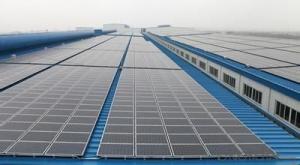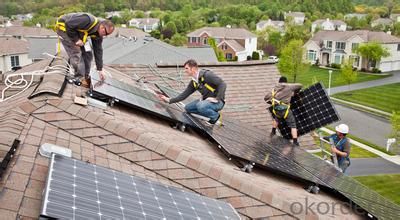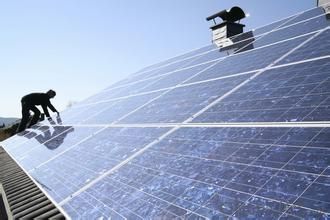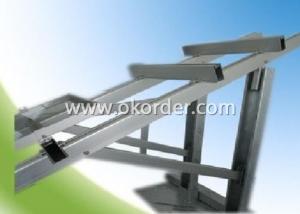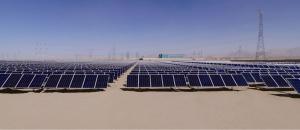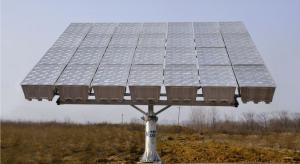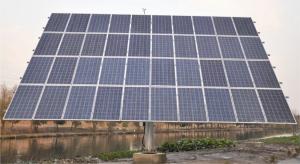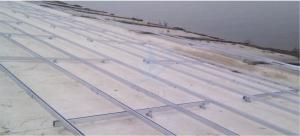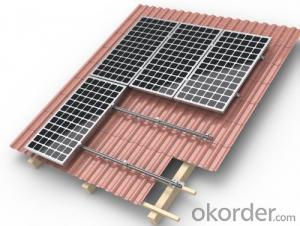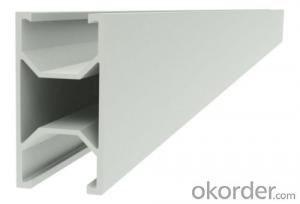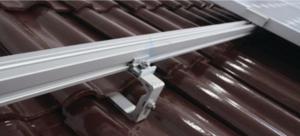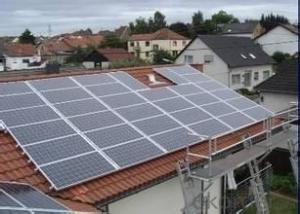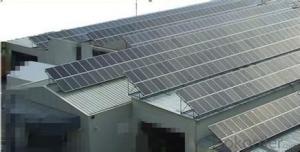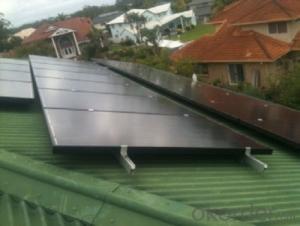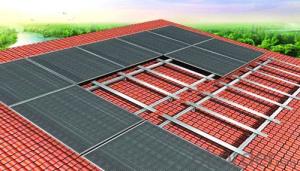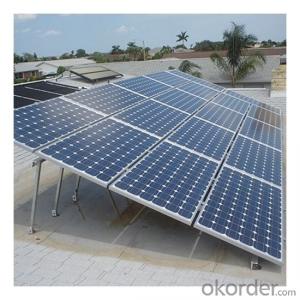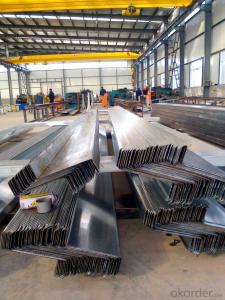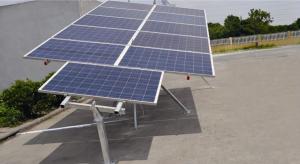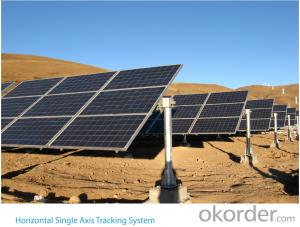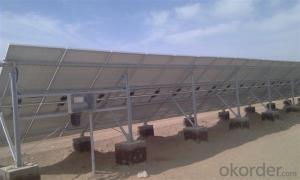Floating Solar Mounting System for Roof System - Plain Tile
- Loading Port:
- China Main Port
- Payment Terms:
- TT OR LC
- Min Order Qty:
- -
- Supply Capability:
- -
OKorder Service Pledge
OKorder Financial Service
You Might Also Like
Roof System - plain tile
Die verschiedenen Komponenten für Schrägdächer - passgenau und für jede Situation maßgefertigt.
Die umfassende Auswahl an unterschiedlichen Komponenten und Systemen ermöglicht es,
mit Schletter-Systemen nahezu jede Modulkonfiguration auf jedem Dach zu befestigen.
Durch unsere hochwertigen und durchdachten Komponenten erzielen Sie schnelle Montagezeiten und verlässliche Haltbarkeit mit statischem Nachweis.
Bei der Auswahl der für Ihr Dach am besten geeigneten Variante haben Sie die Wahl zwischen einer dachparallelen und einer aufgeständerten Lösung.
Kreuzschienensystem für ungünstige Befestigungspunkte
Große Spannweiten möglich
Oftmals weniger Befestigungspunkte möglich
Genaue Einhaltung der Klemmbereiche des Moduls
Flexibel in der Montage
Kombinierbar mit allen Schletter-Systembauteilen
Aus günstigen Standard-Schienen aufzubauen
- Q: Can a solar mounting system be installed on a thatched roof?
- Yes, a solar mounting system can be installed on a thatched roof. However, it requires careful planning and installation to ensure that the roof's integrity is not compromised and that the solar panels are securely attached. Additionally, regular maintenance and inspections are necessary to ensure the thatch remains in good condition and does not obstruct the functioning of the solar panels.
- Q: Are there any specific requirements for installing solar mounting systems in high-temperature regions?
- Yes, there are specific requirements for installing solar mounting systems in high-temperature regions. These requirements include using materials that can withstand high temperatures, ensuring proper ventilation and airflow around the solar panels, and considering the impact of temperature on the efficiency and performance of the system. Additionally, proper maintenance and monitoring of the system are crucial in high-temperature regions to prevent overheating and ensure optimal performance.
- Q: Can solar mounting systems be installed on buildings with limited roof load capacity?
- Yes, solar mounting systems can be installed on buildings with limited roof load capacity. However, it is important to assess the structural integrity of the building and ensure that the roof can safely support the additional weight of the solar panels and mounting system. In some cases, modifications or reinforcements may be required to strengthen the roof before installing the solar system. Consulting with a structural engineer or solar installation professional is recommended to determine the feasibility and safety of installing solar on buildings with limited roof load capacity.
- Q: Can a solar mounting system be adjusted to optimize panel angle?
- Yes, a solar mounting system can be adjusted to optimize panel angle. This allows for the panels to be positioned at the most effective angle to maximize solar energy absorption and increase overall system efficiency.
- Q: Can a solar mounting system be used in areas with limited access to skilled labor?
- Yes, a solar mounting system can be used in areas with limited access to skilled labor. Many solar mounting systems are designed to be user-friendly and require minimal expertise for installation. Additionally, there are simplified installation instructions and tutorials available that can guide individuals with limited skills through the process. With proper training and support, even areas with limited access to skilled labor can successfully install and utilize solar mounting systems.
- Q: Can a solar mounting system be installed on a rooftop with a slate roof?
- Yes, a solar mounting system can be installed on a rooftop with a slate roof. However, careful consideration should be given to the weight and integrity of the slate roof to ensure it can support the additional weight of the solar panels and mounting system. Professional assessment and installation are recommended to ensure proper installation and prevent any damage or safety risks.
- Q: Can solar mounting systems be installed on rooftops with satellite dishes?
- Yes, solar mounting systems can be installed on rooftops with satellite dishes. However, it is important to ensure that the satellite dish is not obstructing the optimal placement of the solar panels. Proper positioning and coordination between the solar mounting system and satellite dish can be done to ensure both systems can coexist on the rooftop.
- Q: What are the advantages of using a solar mounting system?
- One of the main advantages of using a solar mounting system is that it allows for the efficient installation and positioning of solar panels, maximizing their exposure to sunlight. This results in increased energy production and higher efficiency of the solar system. Additionally, solar mounting systems provide stability and protection to the panels, ensuring their longevity and durability. Moreover, these systems often offer flexibility in terms of orientation and tilt angle, allowing for optimization based on the specific location and climate conditions. Overall, solar mounting systems contribute to the overall performance and reliability of a solar energy system.
- Q: Can a solar mounting system be installed on a rooftop with a gable roof?
- Yes, a solar mounting system can be installed on a rooftop with a gable roof. The design and installation process may vary depending on the specific characteristics of the gable roof, but there are mounting systems available that can be customized for this type of roof structure.
- Q: Can solar mounting systems be installed on flat concrete roofs?
- Yes, solar mounting systems can be installed on flat concrete roofs. Flat roofs provide a suitable surface for mounting solar panels as long as there is enough space and structural support. The installation process may require specific equipment and techniques to ensure proper positioning and secure attachment to the concrete roof.
Send your message to us
Floating Solar Mounting System for Roof System - Plain Tile
- Loading Port:
- China Main Port
- Payment Terms:
- TT OR LC
- Min Order Qty:
- -
- Supply Capability:
- -
OKorder Service Pledge
OKorder Financial Service
Similar products
Hot products
Hot Searches
Related keywords
